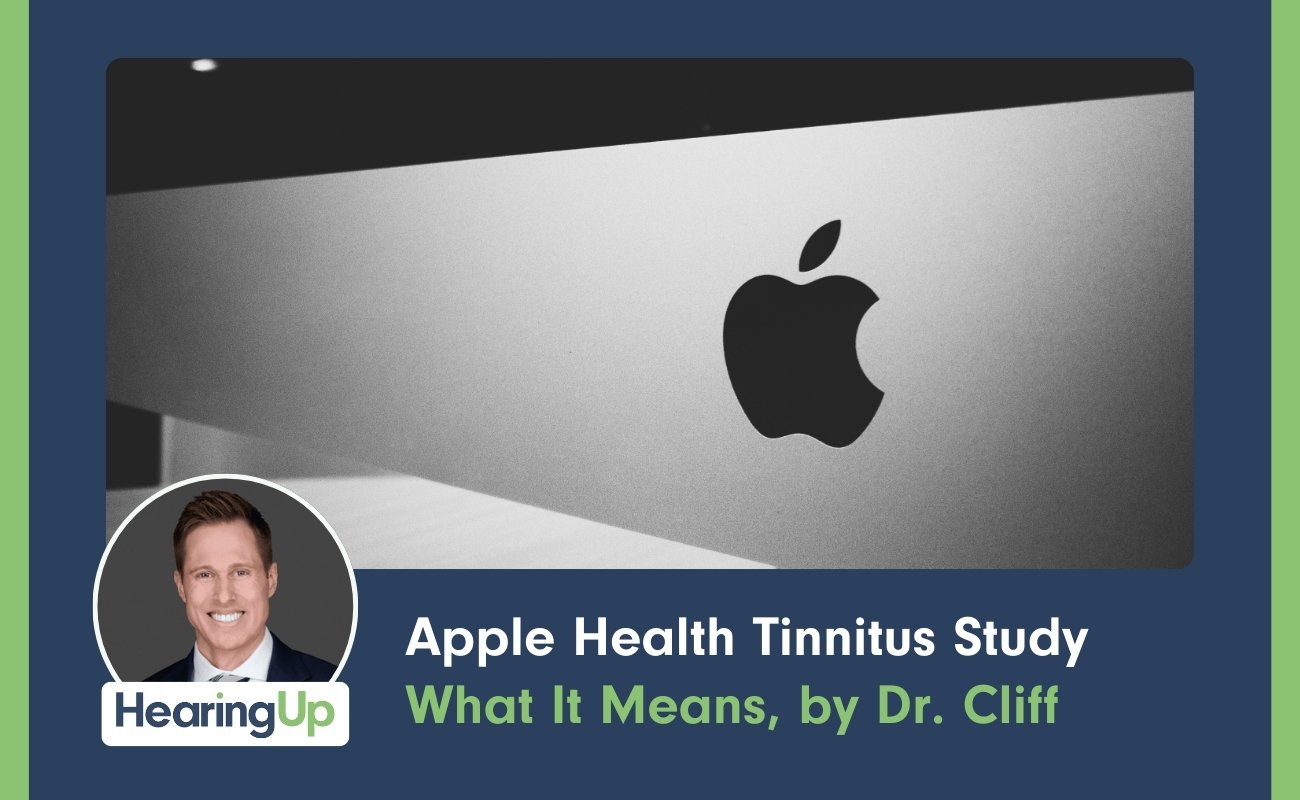For individuals with hearing loss, the ability to hear in quiet environments but struggle in noisy situations is a common and frustrating experience. This phenomenon affects people with all levels of hearing loss, from mild to profound, and remains the number one complaint among hearing aid users. But what exactly causes this discrepancy in hearing ability?
The key to understanding this issue lies in the anatomy of our ears. Most hearing loss stems from the deterioration of outer hair cells in the cochlea, our primary hearing organ. These fragile cells serve as our natural ear amplifiers, taking sound vibrations and amplifying them to trigger neural responses that travel to our brain.
When these cells become damaged due to aging, noise exposure, chemical exposure, or trauma, our ability to process sound becomes compromised. While our brain can often compensate for this damage in quiet environments by piecing together the available information, background noise presents a much greater challenge.
What many don't realize is that our ears don't just send information to our brain—our brain also sends critical instructions back to our ears. This two-way communication system involves two types of nerves:
In normal hearing, when background noise is present, the brain sends signals through these efferent nerves to tell the ear which sounds to prioritize (speech) and which to suppress (noise). However, when outer hair cells are damaged, this suppression mechanism fails. Your brain attempts to send signals instructing your ear to filter out background noise, but without healthy outer hair cells to receive and act on these signals, all sounds—both speech and noise—are transmitted to your brain simultaneously.
This difficulty leads many people with hearing loss to adopt coping strategies such as:
The third option is particularly concerning, as social withdrawal is linked to higher rates of depression and even premature death, according to research.
Today's advanced hearing aids are specifically designed to address this challenge. Technologies like those found in Starkey's Edge AI hearing aids use artificial intelligence and deep neural networks to artificially separate speech from background noise—essentially performing the function that damaged outer hair cells no longer can.
When evaluating hearing aid performance, audiologists measure the signal-to-noise ratio improvement, which indicates how well the device separates speech from noise. The greater this separation, the better you'll hear in noisy environments.
For optimal results in noisy environments, consider these additional factors:
With proper diagnosis, appropriate technology, and correct fitting by qualified professionals, individuals with hearing loss can significantly improve their ability to hear in background noise. While hearing in quiet environments has largely been solved by modern hearing aid technology, addressing background noise challenges requires this more comprehensive approach.
By understanding the biological mechanism behind your difficulty hearing in noise, you can take informed steps toward more effective hearing solutions and maintain your quality of life in all listening environments.
Ever wonder why you can hear in quiet situations, but you continue to struggle in background noise?
Hey guys. Cliff Olson, Doctor of Audiology and founder of Applied Hearing Solutions in Phoenix, Arizona. And in this video I'm explaining exactly why you can't hear in background noise if you have a hearing loss.
Alright, so let's face it. Hearing in background noise is the number one difficulty that people with hearing loss report, and it really doesn't matter whether you have a mild level of hearing loss or a profound level of hearing loss.
However, most people have no idea why they can hear and understand speech in a quiet environment. But as soon as you go into even a little bit of background noise, you have no idea what someone's saying.
When entering these difficult noisy situations, individuals with hearing loss typically have three different options. The first option is to just ask the person to repeat what they're saying over and over and over again.
The second option they have is to just nod their head in agreement, pretending they're understanding everything someone is telling them and hoping the other person doesn't actually catch on.
And the third thing that people with hearing loss will typically do in this situation is just withdraw from the conversation entirely. I myself am guilty of the first two, but most people with hearing loss tend to go with the third option and just withdraw completely.
Of course, this strategy for dealing with background noise when you have a hearing loss is a dangerous one because when you start to withdraw from social situations, not only does that lead to higher rates of depression, but it also leads to premature death. And I know you think I'm joking when I say that, but that has actually been proven by research.
So why is it then if you have a hearing loss that you can go into a quiet situation and understand what someone is saying to you? But as soon as you go into a background noise situation, you tend to struggle?
Well, there is actually a really good reason for this that I'm going to be explaining in this video, but before I do, do me a huge favor. Click the like button. It really helps out the channel. And if you are not yet subscribed to the channel with notifications turned on, go ahead and do that as well. It is greatly appreciated and a huge shout out to Starkey for sponsoring today's video, but more in them in a little bit.
Also, let me know down in the comment section what your strategy is every single time that you can't understand someone talking in background noise.
What most people don't realize is that having difficulty in background noise has a lot to do with the root cause of most hearing losses, which is the deterioration of outer hair cells inside of your cochlea. That's your hearing organ.
These outer hair cells are responsible for taking the natural vibrations of sound as they enter your ear and amplifying them in order to trigger a neuro response that travels up your auditory nerve to your brain. That's why we call these outer hair cells your natural ear amplifiers.
These outer hair cells are extremely fragile, which makes them susceptible to damage due to things like age noise exposure, chemical exposure, and head trauma to name a few when healthy.
These outer hair cells are terrific at taking soft level sounds in your environment and amplifying them enough so you can hear them. But even if some of these outer hair cells are missing, the human brain is usually good at taking what information it does receive and piecing it together so you can understand what someone is telling you if you're in a quiet environment.
However, these outer hair shells are also responsible for helping you hear better in background noise.
Now, bear with me here because I have to give you a little bit more of an in-depth anatomy and physiology lesson. Approximately 5% of the nerves that innervate these outer hair cells are called afferent nerves, meaning that they take information from the ear and send it up to the brain.
The other 95% of these nerves are efferent nerves, meaning they receive information from the brain. So why would an outer hair cell be innervated by so many efferent nerves and so few afferent nerves?
This is because your brain actually tells your ears, which sounds to send up the auditory nerve and which sounds to suppress in a normal hearing ear. In a quiet environment, your brain tells your ears, yeah, go ahead and send all that speech information up.
However, when you get into a background noise situation, the brain is sending signals down to the ear through these efferent nerve endings telling your inner ear not to send up the noise information, but to send up the speech information.
Now, when you have a hearing loss and you're in a quiet environment, your brain is still like, go ahead and just send up all the information, all piece it together, no problem.
However, when you have a hearing loss due to the deterioration of these outer hair cells, your brain does not have the ability to send a signal down to your ears to tell it to suppress the noise from sending up to the brain.
Of course, when you're in a noisy situation and you don't have enough outer hair cells, your brain is trying to send information down to your ear to tell it to suppress the background noise, but your ear never receives the signal and never can suppress the noise that my friend is why it is so much easier to hear in a quiet environment, but you have extreme difficulty in a noisy environment.
And this is why Starkey, today's video sponsor has developed hearing aid technologies designed to overcome this damage to outer hair cells so you can hear better in background noise.
Starkey is the largest American owned hearing aid manufacturer based in Eden Prairie, Minnesota and their new Edge AI hearing aid is one of the best hearing aids in the world when it comes to performance in background noise situations.
The reason behind this is their new deep neural network that uses artificial intelligence to help you separate speech from background noise. When evaluating a hearing aid's ability to do this, we look at signal to noise ratio improvements.
This is a hearing aid's ability to separate speech from background noise, and the bigger this separation is, the better. You'll hear the Starkey Edge AI when using their edge mode plus feature is capable of achieving up to a 13 decibel signal to noise ratio improvement, which is massive, and currently the biggest measured signal to noise ratio improvement of any hearing aid currently on the market.
Essentially, the Starkey Edge AI is capable of doing what your outer hair cells were designed to do before they became damaged.
Go ahead and take a listen for yourself- Range anxiety. Our goal at Starkey is to, with a fear from hearing aid users that they'll miss out on one of life's most important moments due to running out of battery life in their hearing- Aids.
Now, if that doesn't impress you, I'm not really sure what would Starkey's Edge AI hearing aids are also loaded with a ton of other great features, and if you wanna learn more about those features, make sure that you check out my full detailed review video that I'll link in the description.
Now, it's important to understand that there are several other considerations that you need to keep in mind when successfully treating your hearing loss with hearing aids, the first being your signal to noise ratio loss score, which can be identified with a speech and noise test by your hearing care professional.
The higher your signal to noise ratio loss score is the more difficulty you'll have in a background noise situation because that tells us you need more separation of speech from background noise before you can understand what someone is saying.
For instance, if you have a SNR loss score of 10 decibels, that technically means that you need speech to be 10 decibels louder than the background noise before you can understand 50% of what someone is telling you.
If you have a signal to noise ratio law score of 15 decibels, that likely means that you'll need to use an assistive listening device to help give you more separation of the speech from the background noise so you can hear. Because the goal of any hearing aid or assistive listening device in background noise is to try to shrink your signal to noise ratio loss score as low as possible.
The second consideration is pretty obvious at this point, but you need a hearing aid that can separate speech from background noise as much as humanly possible. The better your hearing aid is at doing this, the better you'll be able to hear in a noisy situation.
And the third consideration is that you need to have your hearing aids programmed by a hearing care professional who uses real ear measurement so they can ensure that your hearing aids are programmed correctly.
Real ear measurement is the only way for your hearing care professional to verify that they're amplifying sound appropriately to overcome the damage to your outer hair cells.
Research has consistently shown that hearing aids programs using real ear measurement significantly outperform hearing aids that are not programmed using real ear measurement, especially in background noise.
Let's face it. Difficulty hearing in quiet situations has largely been solved by hearing aids at this point, which is why hearing and background noise continues to be the number one complaint of individuals with hearing loss.
But now that you know exactly why hearing and background noise is so difficult when you have a hearing loss and you know what to do to overcome this difficulty, there's no reason why you shouldn't be able to hear in a background noise situation as long as you get your hearing loss treated properly.
Ever wonder why you can hear in quiet situations, but you continue to struggle in background noise?
Hey guys. Cliff Olson, Doctor of Audiology and founder of Applied Hearing Solutions in Phoenix, Arizona. And in this video I'm explaining exactly why you can't hear in background noise if you have a hearing loss.
Alright, so let's face it. Hearing in background noise is the number one difficulty that people with hearing loss report, and it really doesn't matter whether you have a mild level of hearing loss or a profound level of hearing loss.
However, most people have no idea why they can hear and understand speech in a quiet environment. But as soon as you go into even a little bit of background noise, you have no idea what someone's saying.
When entering these difficult noisy situations, individuals with hearing loss typically have three different options. The first option is to just ask the person to repeat what they're saying over and over and over again.
The second option they have is to just nod their head in agreement, pretending they're understanding everything someone is telling them and hoping the other person doesn't actually catch on.
And the third thing that people with hearing loss will typically do in this situation is just withdraw from the conversation entirely. I myself am guilty of the first two, but most people with hearing loss tend to go with the third option and just withdraw completely.
Of course, this strategy for dealing with background noise when you have a hearing loss is a dangerous one because when you start to withdraw from social situations, not only does that lead to higher rates of depression, but it also leads to premature death. And I know you think I'm joking when I say that, but that has actually been proven by research.
So why is it then if you have a hearing loss that you can go into a quiet situation and understand what someone is saying to you? But as soon as you go into a background noise situation, you tend to struggle?
Well, there is actually a really good reason for this that I'm going to be explaining in this video, but before I do, do me a huge favor. Click the like button. It really helps out the channel. And if you are not yet subscribed to the channel with notifications turned on, go ahead and do that as well. It is greatly appreciated and a huge shout out to Starkey for sponsoring today's video, but more in them in a little bit.
Also, let me know down in the comment section what your strategy is every single time that you can't understand someone talking in background noise.
What most people don't realize is that having difficulty in background noise has a lot to do with the root cause of most hearing losses, which is the deterioration of outer hair cells inside of your cochlea. That's your hearing organ.
These outer hair cells are responsible for taking the natural vibrations of sound as they enter your ear and amplifying them in order to trigger a neuro response that travels up your auditory nerve to your brain. That's why we call these outer hair cells your natural ear amplifiers.
These outer hair cells are extremely fragile, which makes them susceptible to damage due to things like age noise exposure, chemical exposure, and head trauma to name a few when healthy.
These outer hair cells are terrific at taking soft level sounds in your environment and amplifying them enough so you can hear them. But even if some of these outer hair cells are missing, the human brain is usually good at taking what information it does receive and piecing it together so you can understand what someone is telling you if you're in a quiet environment.
However, these outer hair shells are also responsible for helping you hear better in background noise.
Now, bear with me here because I have to give you a little bit more of an in-depth anatomy and physiology lesson. Approximately 5% of the nerves that innervate these outer hair cells are called afferent nerves, meaning that they take information from the ear and send it up to the brain.
The other 95% of these nerves are efferent nerves, meaning they receive information from the brain. So why would an outer hair cell be innervated by so many efferent nerves and so few afferent nerves?
This is because your brain actually tells your ears, which sounds to send up the auditory nerve and which sounds to suppress in a normal hearing ear. In a quiet environment, your brain tells your ears, yeah, go ahead and send all that speech information up.
However, when you get into a background noise situation, the brain is sending signals down to the ear through these efferent nerve endings telling your inner ear not to send up the noise information, but to send up the speech information.
Now, when you have a hearing loss and you're in a quiet environment, your brain is still like, go ahead and just send up all the information, all piece it together, no problem.
However, when you have a hearing loss due to the deterioration of these outer hair cells, your brain does not have the ability to send a signal down to your ears to tell it to suppress the noise from sending up to the brain.
Of course, when you're in a noisy situation and you don't have enough outer hair cells, your brain is trying to send information down to your ear to tell it to suppress the background noise, but your ear never receives the signal and never can suppress the noise that my friend is why it is so much easier to hear in a quiet environment, but you have extreme difficulty in a noisy environment.
And this is why Starkey, today's video sponsor has developed hearing aid technologies designed to overcome this damage to outer hair cells so you can hear better in background noise.
Starkey is the largest American owned hearing aid manufacturer based in Eden Prairie, Minnesota and their new Edge AI hearing aid is one of the best hearing aids in the world when it comes to performance in background noise situations.
The reason behind this is their new deep neural network that uses artificial intelligence to help you separate speech from background noise. When evaluating a hearing aid's ability to do this, we look at signal to noise ratio improvements.
This is a hearing aid's ability to separate speech from background noise, and the bigger this separation is, the better. You'll hear the Starkey Edge AI when using their edge mode plus feature is capable of achieving up to a 13 decibel signal to noise ratio improvement, which is massive, and currently the biggest measured signal to noise ratio improvement of any hearing aid currently on the market.
Essentially, the Starkey Edge AI is capable of doing what your outer hair cells were designed to do before they became damaged.
Go ahead and take a listen for yourself- Range anxiety. Our goal at Starkey is to, with a fear from hearing aid users that they'll miss out on one of life's most important moments due to running out of battery life in their hearing- Aids.
Now, if that doesn't impress you, I'm not really sure what would Starkey's Edge AI hearing aids are also loaded with a ton of other great features, and if you wanna learn more about those features, make sure that you check out my full detailed review video that I'll link in the description.
Now, it's important to understand that there are several other considerations that you need to keep in mind when successfully treating your hearing loss with hearing aids, the first being your signal to noise ratio loss score, which can be identified with a speech and noise test by your hearing care professional.
The higher your signal to noise ratio loss score is the more difficulty you'll have in a background noise situation because that tells us you need more separation of speech from background noise before you can understand what someone is saying.
For instance, if you have a SNR loss score of 10 decibels, that technically means that you need speech to be 10 decibels louder than the background noise before you can understand 50% of what someone is telling you.
If you have a signal to noise ratio law score of 15 decibels, that likely means that you'll need to use an assistive listening device to help give you more separation of the speech from the background noise so you can hear. Because the goal of any hearing aid or assistive listening device in background noise is to try to shrink your signal to noise ratio loss score as low as possible.
The second consideration is pretty obvious at this point, but you need a hearing aid that can separate speech from background noise as much as humanly possible. The better your hearing aid is at doing this, the better you'll be able to hear in a noisy situation.
And the third consideration is that you need to have your hearing aids programmed by a hearing care professional who uses real ear measurement so they can ensure that your hearing aids are programmed correctly.
Real ear measurement is the only way for your hearing care professional to verify that they're amplifying sound appropriately to overcome the damage to your outer hair cells.
Research has consistently shown that hearing aids programs using real ear measurement significantly outperform hearing aids that are not programmed using real ear measurement, especially in background noise.
Let's face it. Difficulty hearing in quiet situations has largely been solved by hearing aids at this point, which is why hearing and background noise continues to be the number one complaint of individuals with hearing loss.
But now that you know exactly why hearing and background noise is so difficult when you have a hearing loss and you know what to do to overcome this difficulty, there's no reason why you shouldn't be able to hear in a background noise situation as long as you get your hearing loss treated properly.

Phonak Virto Infinio custom aids offer comfort and discretion but face limits in complex listening versus behind-the-ear models.
Read More
Three methods confirm hearing aid performance: test box for specs, Real Ear Measurement for accuracy, and outcome assessments for effectiveness.
Read More.jpg)
Daily shower water flushing helps prevent earwax buildup more effectively and affordably than products, though impacted wax needs professional removal.
Read More
LACE AI Pro uses AI to deliver personalized auditory training, boosting brain processing skills beyond what hearing aids alone can provide.
Read More
Hearing aid costs cover technology, expert services like Real Ear Measurement and fitting, ongoing support, and admin fees—justifying the investment.
Read More
Apple’s 160,000-person study found heart rate variability links to tinnitus severity, marking the first objective biomarker for treatment tracking.
Read More